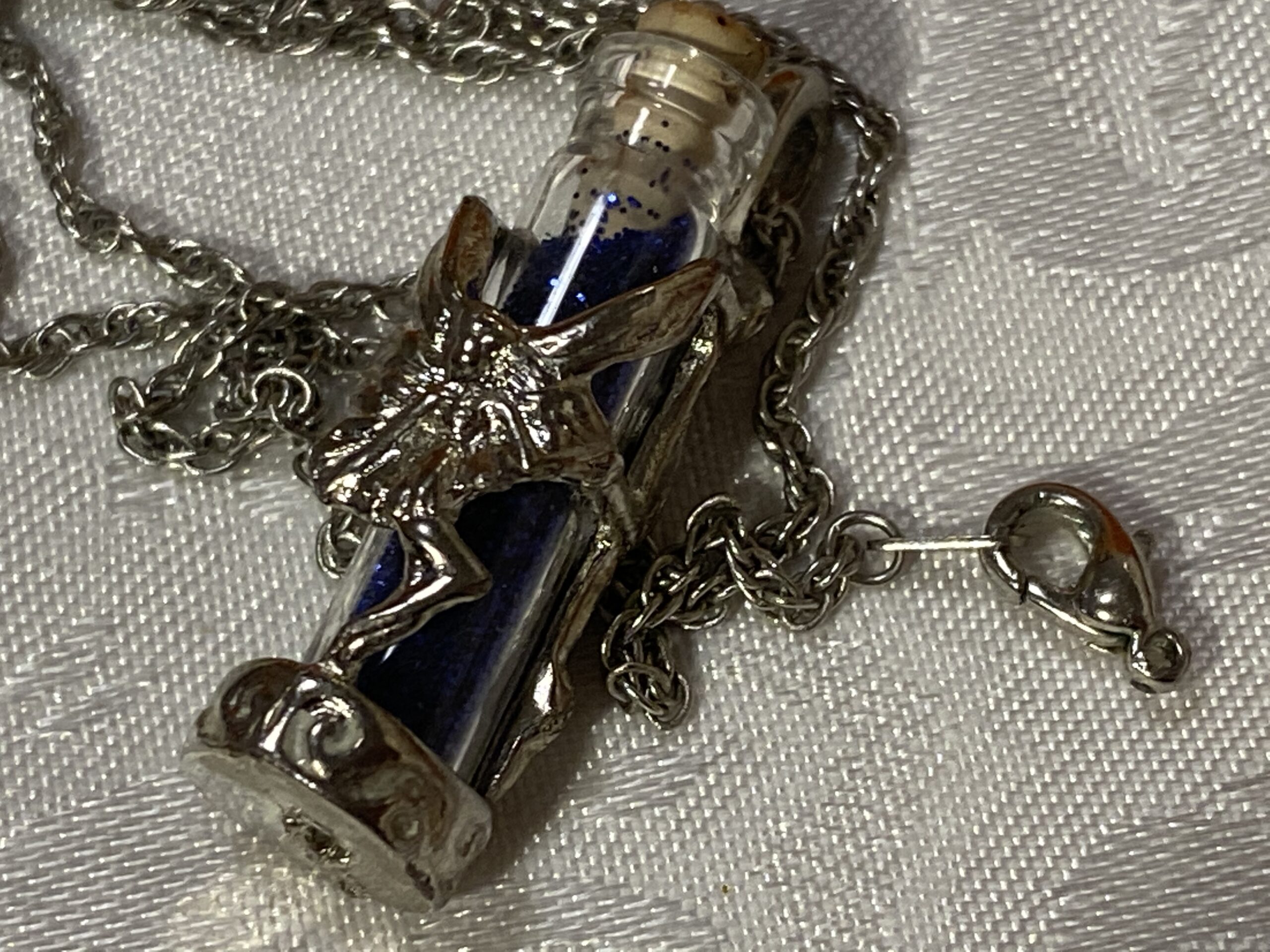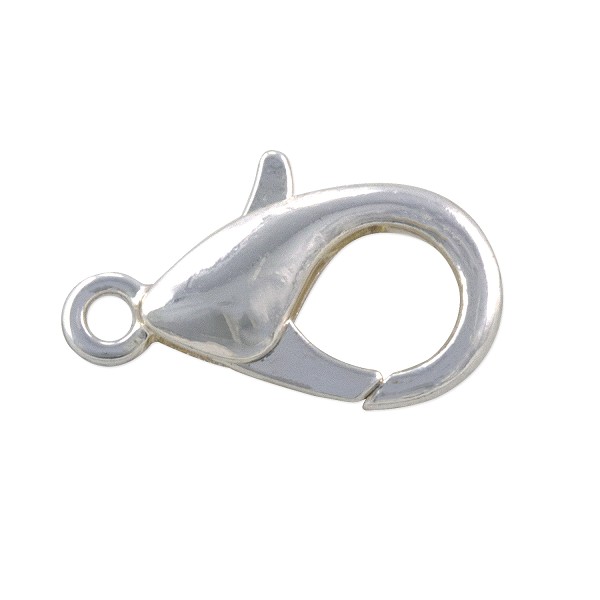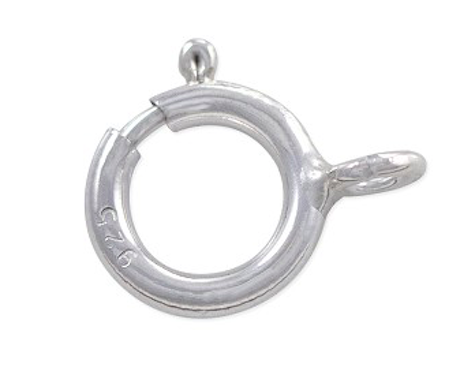Lobster clasps on necklaces often have unsafe levels of Lead — this is concerning, as kids often put their necklace chain in their mouth.
For those new to this website:
Tamara Rubin is a multiple-federal-award-winning independent advocate for childhood Lead poisoning prevention and consumer goods safety and a documentary filmmaker. She is also a mother of Lead-poisoned children (two of her sons were acutely Lead-poisoned in 2005). Since 2009, Tamara has been using XRF technology (a scientific method used by the U.S. Consumer Product Safety Commission) to test consumer goods for toxicants (specifically heavy metals — including Lead, Cadmium, Mercury, Antimony, and Arsenic). Tamara’s work was featured in Consumer Reports Magazine in February of 2023 (March 2023 print edition).
July 3, 2021 — Saturday
Warning: Lobster clasps can have unsafe levels of Lead and other toxic heavy metals.
In the consumer goods testing work I do, I often test Jewelry. It’s intriguing for people to discover what precisely their precious heirlooms or sentimental pieces are “really” made of (solid Gold? Silver? Platinum? Copper? Stainless Steel? Titanium? Silver-plated or Gold-plated “miscellaneous” base metals? etc.). The instrument I use tests for most commonly available metals — and the detection readings also reveal both the specific metal content AND the exact percentages of each of the metals found in the object tested.
Why do lobster clasps have Lead?
In testing jewelry, I often find that lobster clasps in particular test positive for either high levels of Lead or high levels of Cadmium (both metals are incredibly potent neurotoxicants). This is very different from other types of clasps – which tend to not test positive for high levels of toxic heavy metals. The reason for this is that the lobster clasps are made of cast metal (vs. rolled or pressed wire or other types of formed metal) and cast metal (by nature) tends to have SOFTER metals in it to make it easier to cast, and those softer metals include Lead, Cadmium, and Antimony.
Isn’t this just on cheap Jewelry, though?
For me, the most interesting part of this finding is that this is not only true with cheap, mass-manufactured jewelry, but also with quite a bit of what might be considered fine jewelry – jewelry where everything but the clasp is made of high-quality Gold or Silver – but the clasp (in the case of a lobster clasp) is still made from a toxic base metals soup [commonly referred to as “pot metal”]. I suspect this is because, while the bead choice and design of a necklace, bracelet, or anklet may be thought-out and intentional, the clasp is often an afterthought. Typically, instead of designing a clasp (and putting the company logo or other markings on the clasp), it is more common to see clasps chosen from readily available mass-manufactured “findings” (components of jewelry that are found in the generic mass-market supply chain inventory, rather than expressly made for a designer’s specific item).
This is an image of a typical lobster clasp:
Continue reading below the image.
Exact XRF test results for the clasp pictured (typical of most lobster clasps)
The lobster clasp (on the fairy necklace – pictured at the top of the article) tested positive for 92,900 ppm Lead. That’s almost 10% Lead! It also tested positive for high levels of Cadmium, and Antimony (full test results for this clasp are below). These are the exact readings (all metals detected using XRF technology):
- Lead (Pb): 92,900 +/- 1,400 ppm
- Cadmium (Cd): 490 +/- 101 ppm
- Antimony (Sb): 20,900 +/- 500 ppm
- Selenium (Se): 422 +/- 140 ppm
- Nb: 1,826 +/- 171 ppm
- Tin (Sn): 23,100 +/- 500 ppm
- Gold (Au): 1,816 +/- 395 ppm
- Copper (Cu): 169,400 +/- 1,800 ppm
- Nickel (Ni): 685,900 +/- 2,400 ppm
- Iron (Fe): 889 +/- 272 ppm
All test result sets reported here on LeadSafeMama.com are on components tested multiple times to confirm the results. Each component of each item reported is tested for 30 seconds or longer for each test. Results are science-based, accurate, and replicable. To learn more about the testing reported on this website, please click here. The work reported here is a collaborative effort between the Lead Safe Mama team and our readers. Readers send us things for testing and also help cover the costs of the testing reported here on the site. In this way, the test results shared here are truly independent of any industry influence or specific corporate influence.To send in an item for testing – click here for more details.
How much Lead is “too much” Lead? What about Cadmium and Antimony?
Consumer goods with 90 ppm Lead (or more) in the paint glaze or coating of the item are considered to be unsafe for children; items with 100 ppm Lead (or more) in the substrate (the base material) of any component are considered unsafe – and illegal – in any item “intended for use by children”. For Cadmium, regulatory limits range [it varies, based on the location and application of the regulation; there is currently no Federal standard in the U.S.] from 40 ppm to 600 ppm. Antimony is not regulated at all — there are no current regulations to limit total Antimony content in consumer goods in the U.S., despite it being similarly toxic to Lead and Cadmium. (And none of the aforementioned regulations apply to products manufactured for use by adults.)
What’s the concern?
The primary concern is for fidgeting activity and pica — or mouthing — of an item (and while one might jump to the conclusion that “most people don’t put their Jewelry in their mouth,” you would actually be surprised by how common it is for people to drape their chain [including the clasp] in their mouth – as an unconscious fidget action or nervous habit. (When I demonstrate this behavior to people they recognize it as something they have seen their children [or themselves] do, immediately!)
What can you do about this?
Consider swapping out the claps for ones known to be Sterling Silver (looking for clasps specifically marked with the “925” mark); or looking for ones that are made of rolled metal or wire-like spring ring clasps, like the one pictured below (which is also Sterling Silver, as indicated by the 925 mark).
As always, thank you for reading and for sharing these articles. Please let me know if you have any questions and I will do my best to answer them personally as soon as I have a moment.
Tamara Rubin
#LeadSafeMama
Never Miss an Important Article Again!
Join our Email List













What if the lobster is clearly marked 925? Is it still a risk regardless?
No – that would be the exception. If it is marked 925 directly on the clasp it should be fine.
T